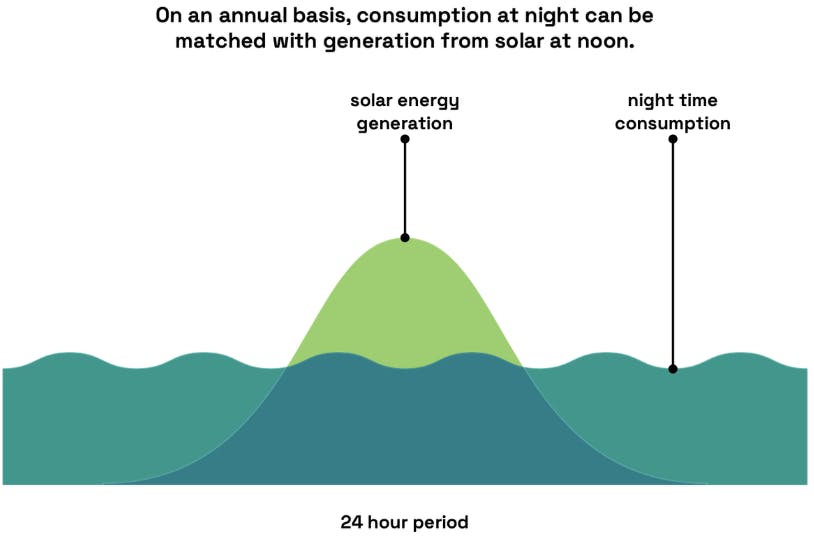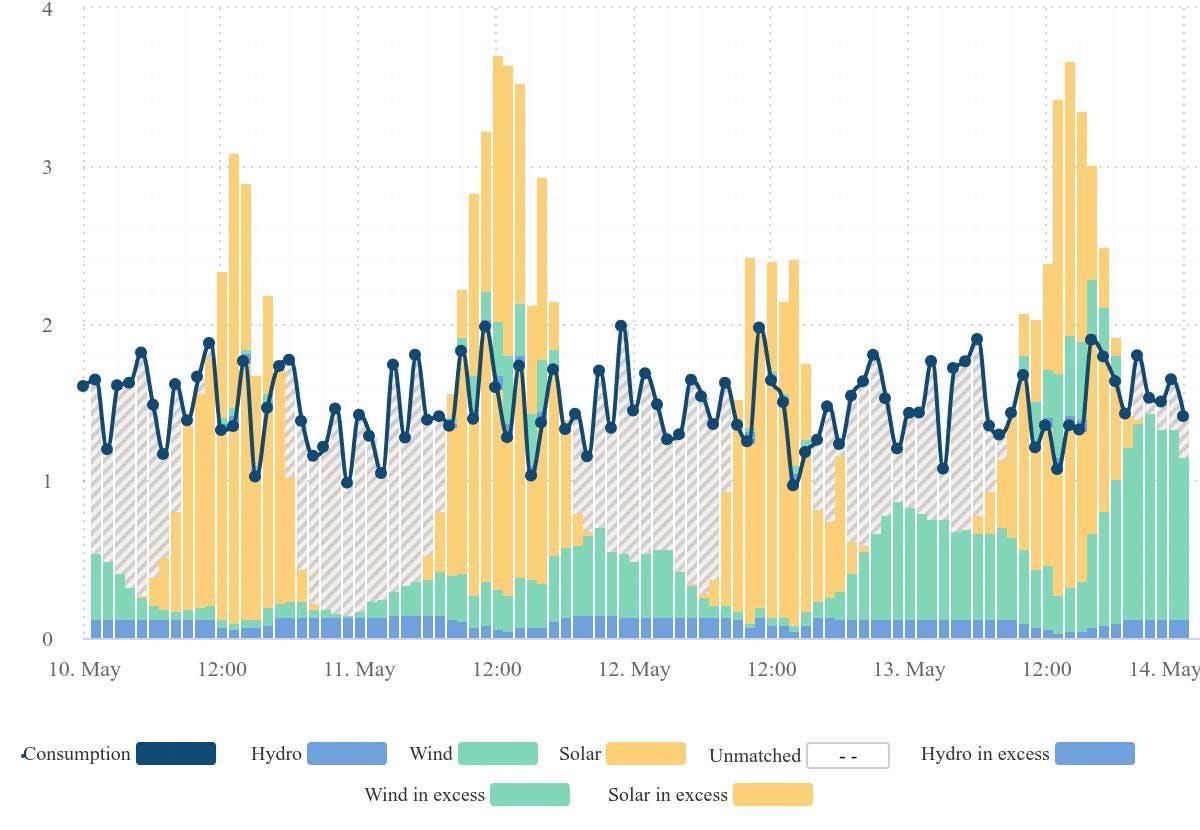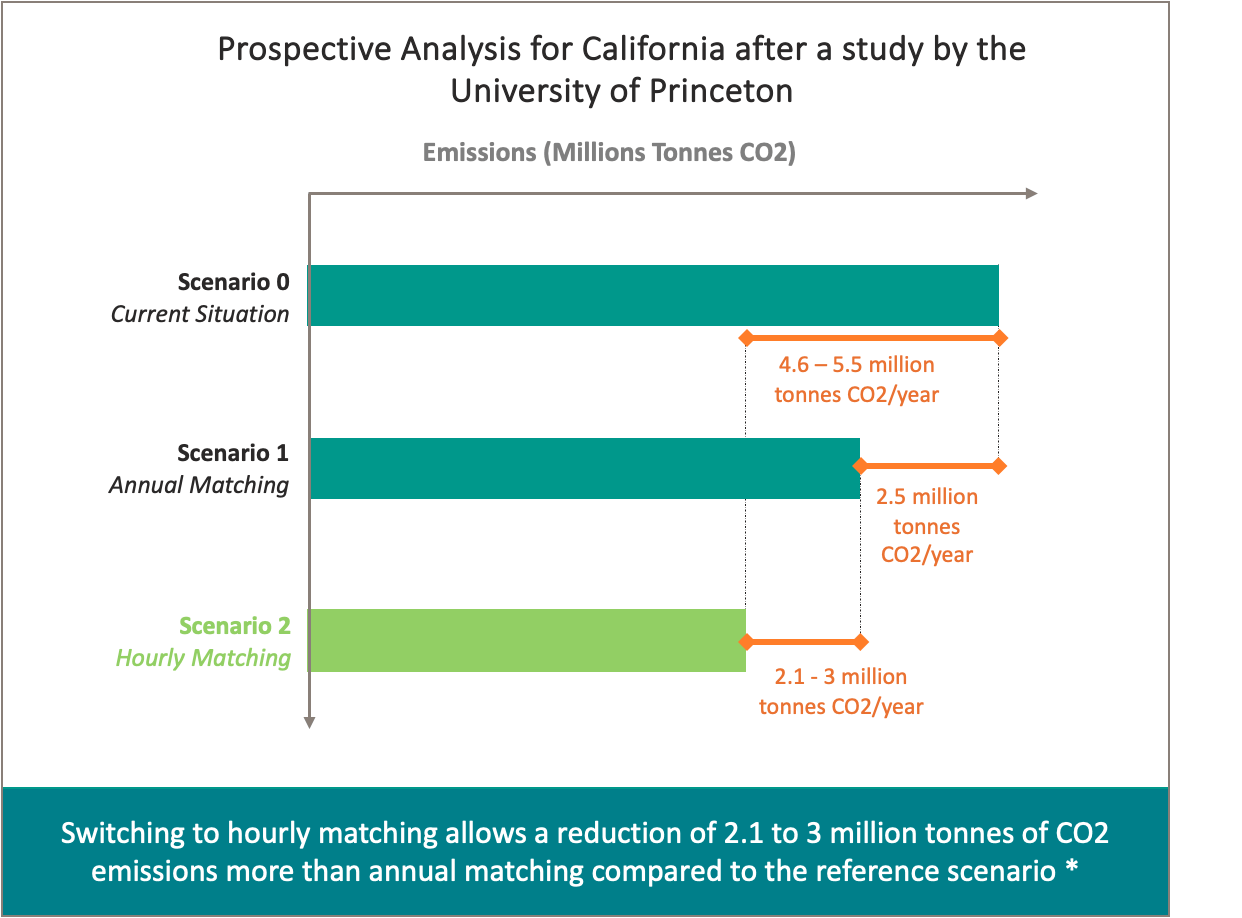Insight · 26 April 2024
Understanding Hourly Matching When You’re New to the Industry
Hi, I’m Charles Checkley, I joined Granular Energy a few months ago. Hourly matching, 24/7 carbon-free energy, granular certificates - it’s not an easy topic to get a grip on. When I joined the company, I spent some time understanding the sector by reading some of the academic research available, and looking at existing projects. I’ve put together some thoughts introducing the topic and highlighting some of the benefits.

Defining annual matching and hourly matching
Current regulations and worldwide accepted methodologies such as the Greenhouse Gas Protocol Scope 2 Guidance allow for annual matching between renewable electricity generation and electricity consumption when accounting for emissions linked to electricity consumption.
Whilst this annual accounting methodology has helped drive growth in clean energy procurement (the market for energy attribute certificates is worth over $10bn annually), it is also leading to distrust and ineffective price signals for investment. With annual matching, a company can ‘match’ its electricity usage in periods of low renewables (windless nights) with periods when renewables are in excess supply (a windy sunny summers day).

Figure 1: Illustration of annual matching
For example, an annually matched data centre might still frequently be reliant on carbon emitting technologies such as coal and gas despite being 100% renewable on an annual matched basis - see Figure 2.

Figure 2: Carbon-free energy assigned to a data centre on an annual matching basis
This continued reliance on fossil fuels, despite being annually matched, can give the wrong impression to buyers of clean energy tariffs who mistakenly believe that they are only using green energy. As a result of this, marketing of 100% green tariffs based on annual matching has been ruled misleading in some countries.
To address these concerns, a more granular level of matching is required, that is a closer reflection of the physical reality of the grid.
How does hourly matching work, why does it matter?
Hourly matching requires an energy consumer (or their energy supplier) to match consumption with clean energy production on an hourly or sub-hourly basis instead of annually. Consumers are then provided a percentage matching score indicating how much of their consumption was covered by carbon free generation on an hourly basis.
Research has demonstrated that a significant reduction in CO2 emissions can be achieved by even a small portion (10%) of commercial and industrial consumers switching to hourly, rather than annual matching [Figure 3].

Figure 3: Xu et al 2021 System level Impacts of 24/7 Carbon free Electricity Procurement Assumption: * 10% of C&I consumers achieve 100% matching on an annual basis (scenario 1) or hourly basis (scenario 2)
This is enabled by the fact that in addition to allowing companies to reduce their own individual emissions, hourly matching can also bring significant system wide benefits (see research from Technical University of Berlin, Princeton University, International Energy Agency). As demand for hourly matching increases, energy companies are forced to deploy more clean energy capacity to meet increasing volumes of matched consumption, reducing emissions at the grid level.
Additionally, because obtaining high hourly-matching scores requires investment in dispatchable technology that can output carbon-free energy at times of low wind and solar, a market for advanced technologies like energy storage is created, benefiting the whole electricity system. This in turn reduces the need for backup fossil fuel generation and results in reduced price volatility.
Hourly matching also enables businesses of all sizes to have a greater impact through purchasing green energy. By targeting clean energy on an hourly basis from their energy supplier, energy buyers can send an important price signal, that can incentivise investment in technologies that deliver clean energy when it is most needed, without the risk of a long-term Power Purchase Agreement which can be prohibitive for many businesses. Hourly matching enables smaller companies to participate in decreasing the grid’s carbon emissions whilst also allowing them to reduce their scope 2 emissions in a meaningful way (see our blog post on additionality; ‘how buying clean energy is like buying oat milk’. There are already some large scale deployments, with UK utility Good Energy offering hourly-matching to all of their business customers.
The costs of hourly matching
There are several perceived challenges associated with hourly matching that are addressed in our other recent blog post on hourly matching myths. Currently, achieving 100% hourly matching can indeed be costly due to the majority of Carbon-Free Energy (CFE) being produced by non-dispatchable wind and solar assets. However, it has been shown that hourly matching scores of 90-95% can be achieved with only a small cost premium compared to annually matching 100% renewable energy. This is done by supplementing wind and solar with battery storage and still brings significant carbon reductions in comparison to annually matched energy [Figure 4].

Figure 4 - “System-level Impacts of 24/7 Carbon-free electricity procurement in Europe”, TU Berlin, October 2022
Modelling has also shown that 100% CFE target could have a much smaller cost premium if long duration storage or clean dispatchable technologies like advanced geothermal are available. Increased uptake in hourly matching encourages the development of these future technologies.
The role of granular certificates
For hourly matching to reach its full potential, timestamped, or ‘granular’ energy attribute certificates would be highly beneficial. The registries that issue energy attribute certificates (EACs) today provide the location of where the energy came from, but not time of production. These registries are generally managed by grid operators, regulators or other authorities depending on the region. Some registries, such as MRETs and PJM-GATs are already developing this capability as a result of demand from the private-sector, but in general governments and regulators are yet to put significant pressure on these organisations to move faster. The European Union for instance, published an update to its Renewable Energy Directive in September 2023, specifying that time-stamped energy certificates should be made available by EU member states, however no implementation deadline has so far been specified.
Summary: green energy procurement with system level impact
In summary, hourly matching is a credible way for electricity consumers to reduce their emissions that also leads to overall energy system decarbonisation by incentivising the technologies that can provide clean energy when it is most needed. It’s also possible today, and adoption is expected to increase rapidly over the next few years due to increasing demands and changes in regulation.
Share article